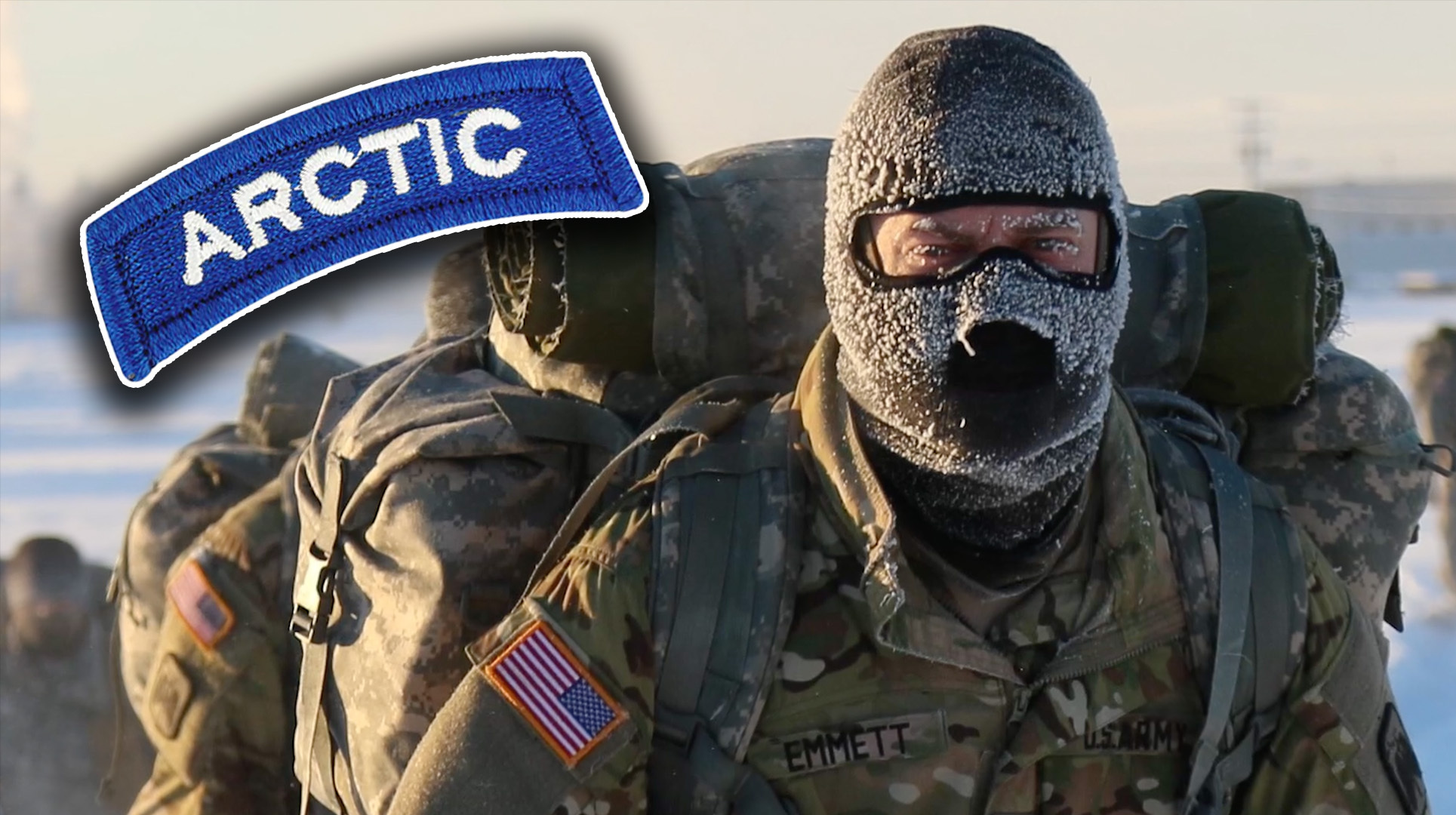

Troops who endure freezing temperatures may soon find their hands a little toastier in pockets lined with some extra cash.
Under a measure included in the annual defense bill passed this week, troops in cold weather stations will see a new “Cold Weather Location” special duty pay for assignments where “the temperature is expected to drop below -20°F,” based on the 2012 Plant Hardiness Zone Map published by the Department of Agriculture.
Exactly how the new pay will end up in paychecks is still to be worked out, Pentagon officials told Task & Purpose. Which locations might be eligible and how much the pay might be can’t be determined until the National Defense Authorization Act becomes law. But with a cut-off temperature of -20 degrees, it may apply to troops stationed in places like Pituffik Space Base (formerly Thule Air Base) in Greenland, the 22,000 active duty personnel in Alaska and even members assigned to famously frigid Air Force bases in the upper midwest.
“It is quite possible that it is a recognition that it’s uncomfortable to be living in a cold climate. But there’s part of me that thinks it’s more tied to the remoteness than it is to the temperature specifically,” said Kate Kuzminski, director of the Military, Veterans, and Society Program at the Center for New American Security, a Washington DC think tank.
There are some compounding challenges for troops living on the Northern-most bases, she said. In places like Alaska, half the year has drastically reduced daylight hours, and the cost of living is higher due to the need to ship goods from the continental U.S.
In 2021, the Army saw 17 suicides out of its 11,000 soldiers based in Alaska. In 2022, the Army’s Command Sgt. Maj. Vern Daley Jr. wrote a letter to troops pledging increased access to mental health care after four soldiers committed suicide in one month.
“The services were trying to build out special recruiting pays for social workers and counselors to live out there and serve the community,” Kuzminski said.
Subscribe to Task & Purpose Today. Get the latest military news and culture in your inbox daily.
Other troops that see the kind of extremely cold temperatures specified in the new law are at Minot Air Force Base in North Dakota, the Army Reserve installation at Fort McCoy, Wisconsin and Malmstrom Air Force Base in Montana, said John Castellani, a research physiologist specializing in cold environments with the Army’s Research Institute of Environmental Medicine.
“The big thing about incentive pays is that they acknowledge that there is an extra level of effort required in those assigned to specific roles or locations as compared to their counterparts at other installations or in other roles,” Kuzminski said.
During the summer of 2022, House Republicans began pushing for an extra incentive pay for cold weather to be included in the NDAA, much like hazardous pay, but the White House pushed back on it and basically said, ‘Hey, we’ve got all these other incentive pays that already occur. This might not be the best use of resources,’” she said.
The most relevant comparison is probably Navy pay for people aboard a ship as a duty station with a more remote lifestyle, Kuzminski said. Dubbed “Career Sea Pay,” sailors can see extra payments between $50 to $150 a month.
Kuzminski also believes the special bonus pay is connected to the strategic competition between the U.S., China and Russia over the Arctic.
The 2022 U.S. National Strategy for the Arctic Region notes the area’s extensive natural resources and the security implications for protecting American citizens and defending its sovereign territory. As climate change continues to impact the natural landscape of the Arctic, nations are also looking to capitalize on newly evolving shipping routes.
“Military installations in Alaska are strategic in that it helps the United States have a pivotal place from which they can address issues in the Indo Pacific and in Russia,” she said.
It’s unclear why the fiscal 2024 National Defense Authorization Act used the USDA’s 2012 map instead of the 2023 version released in November. Plant hardiness zone designations represent the “average lowest winter temperature” at a given location over a specific time period, according to the department.
“Notably, the 2023 map for Alaska is ‘warmer’ than the 2012 version,” according to the USDA.
Kuzminski said it probably has to do with the fact that the NDAA language was submitted in the summer while the new map came out months later. Nonetheless, the 2012 map could be “more inclusive,” she said – meaning more troops qualify for this special duty pay.
The measure was included in the fiscal year NDAA version passed by the House and Senate earlier this week, which is now headed to the President’s desk to be signed into law.
The special bonus pay is in addition to the 5.2% base pay increase for all service members and civilian employees authorized by Congress.
The latest on Task & Purpose
- First female active-duty soldier graduates from sniper school
- 5 question only a veteran would ask Medal of Honor recipient Michael Thornton
- Navy fires recruiting district commanding officer
- Army tanker vet facing cancer gets a final wish: send one last round
- Army employee indicted for stealing $100 million from military youth program